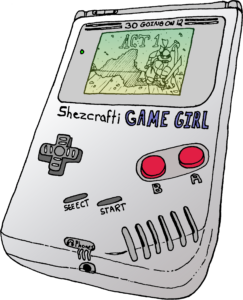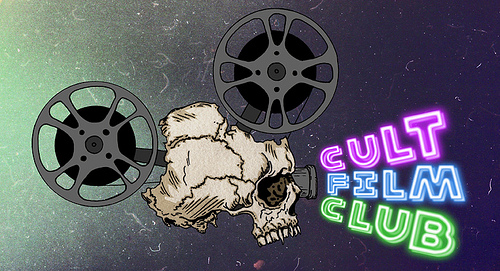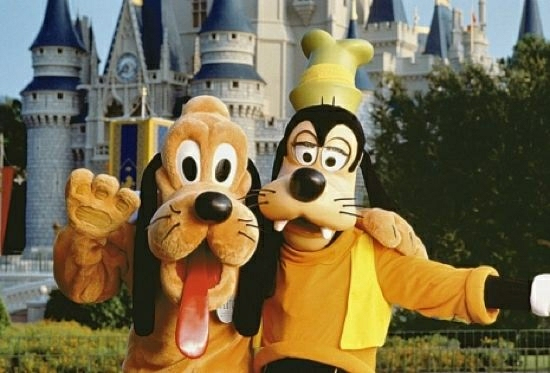
The evolutionary inconsistencies between Goofy and Pluto are well documented. The Cliff’s Notes version of the debate goes something like this: They’re both dogs, both Disney characters, and yet only one of them talks, wears clothes, drives a car, and performs other basic human-like functions like walking on two legs while the other does not. Why is that?
It’s a conundrum that was immortalized by the movie Stand By Me and has been puzzling Disney fans since at least 1986. While there has never been a satisfactory answer (and probably never will be), the great Goofy/Pluto debate is just the jumping off point for a much broader topic of discussion:
In worlds full of talking animals, why are some of them just pets?
Talking Animals vs. Pets
Cartoons and kid’s movies are rife with examples of the “talking animals” vs. “just a pet” phenomenon in which animal characters with human-like counterparts seem to have been left behind by evolution. It’s the equivalent of a human being keeping a lesser human being as a pet.
But what’s the rationale for it? Did these characters fall out of the phylogenetic tree? Is it meant to be some sort of statement on the human superiority complex? Or is it just a lack of imagination on the part of the creators?
This is the kind of weird crap I lay awake at night thinking about. To illustrate my confusion, I thought it would be a fun (if useless) exercise to put together a list of examples.
Bugs & Daffy vs. Sylvester & Tweety
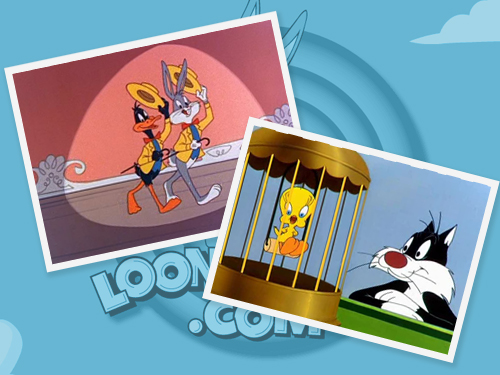
In the world of Looney Tunes, you have your intelligent, free-thinking, almost-human animal characters like Bugs Bunny and Daffy Duck alongside animals who are clearly kept as pets like Sylvester and Tweety Bird. Do you think Sylvester ever looks at his famous singing, dancing non-pet animal acquaintances and wonders why his own existence sucks?
Rowlf vs. Other Muppet Dogs
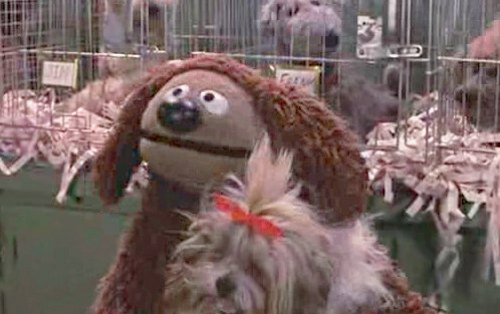
There are lots of dogs in the Muppet universe, but Rowlf is the most popular. And unlike most of the other Muppet dogs, he can talk, hold down a job, and jam on the piano like it’s nobody’s business. But in the same universe you have dogs like Barkley, who is apparently only good for accompanying dumb kids on their way to Sesame Street.
The most glaring example of these disparities can be found in The Muppets Take Manhattan, where Rowlf takes a job managing a kennel full of other dogs, both of the real and Muppet variety.
Sir Didymus vs. Ambrosius/Merlin
Here’s another great example from Muppetdom:
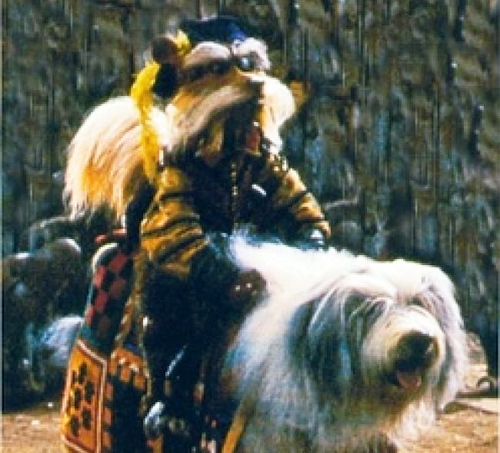
In the movie Labyrinth, Sir Didymus is a dog (a fox-terrier, to be exact) character who believes he’s a brave and chivalrous knight. He rides around on his “trusty steed” which is an actual dog named Ambrosius who is, well, just a dog. As if this weren’t ridiculous enough, Ambrosius is the Labyrinth version of Merlin, the family dog we see running home with Sarah in the beginning.
Now bear with me if you’re not familiar with Labyrinth, because I’m about to go off on a bit of a tangent. At the beginning of the movie, we get a glimpse of Sarah’s bedroom, which contains all manner books, figurines and other knicknacks that later come to life in some fashion after she enters the Labyrinth. For example, there’s a dwarf figurine that’s clearly representative of Hoggle and a snow globe that looks an awful lot like the goblin masquerade ball. So if you’re keeping up, we’ve got a bunch of inanimate objects that come to life inside the Labyrinth alongside a real dog that…just stays a dog– except with the added humiliation of having another dog ride him.
Garfield vs. Odie
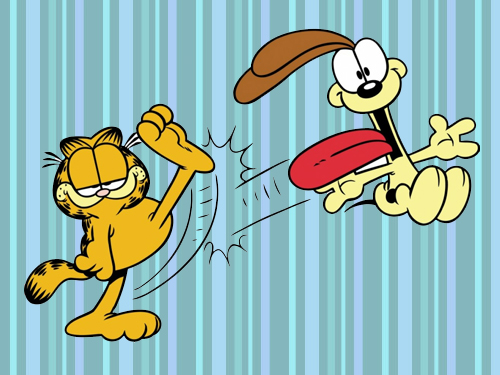
Garfield and Odie are an especially interesting case study. Both are domestic pets living under the same roof, but Garfield is an intelligent, wisecracking, connoisseur of lasagna while Odie is, in most scenarios, just a stupid, slobbering dog.
Spongebob vs. Gary
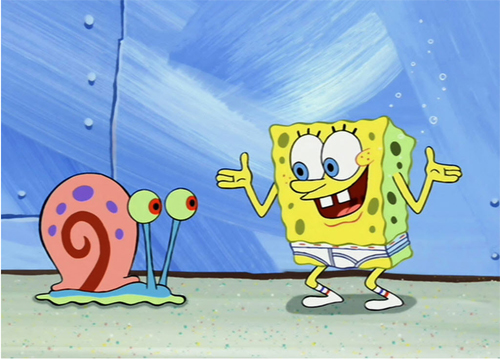
Spongebob Squarepants is perhaps the ultimate slap in the face to animal characters who’ve been relegated to just being pets. The world of Bikini Bottom is filled with anthropomorphic sea creatures (with the exception of one very innovative squirrel), but Spongebob himself is an inanimate object. So why does he have a pet snail named Gary, who, also inexplicably, meows like a cat? That’s right, in this show a sponge exhibits more human characteristics than a snail.
Final Thoughts
Next time someone brings up the tired Goofy vs. Pluto debate at a party, you can whip out one of these much cooler examples and pretend like you’re semi-knowledgeable about a subject that ultimately nobody cares about.
Now that I’ve spent way too much time thinking about stupid crap, I’m off to go home to my very un-anthropomorphic cat.

